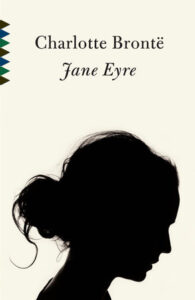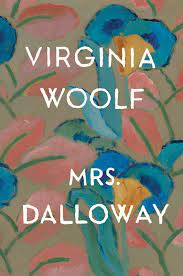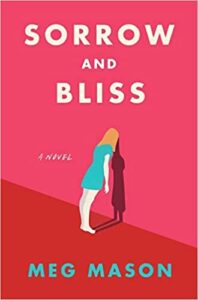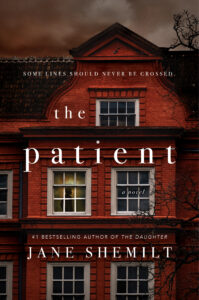Madness lies at the dark heart of some of the greatest and most popular novels in the world, reflecting its power to drive a narrative; readers are deeply intrigued. We are reeled in by our dread of the unknown, by the unexplored darkness out there that it represents as well as the unnerving possibility that it is also inside us
Madness is of course an outdated shorthand term encompassing a variety of mental disorders and illnesses; the knowledge that so many of us are on a spectrum that ranges from mild anxiety to severe psychosis makes the literary portraits of the mentally unwell compelling as well as disconcerting.
The five books I describe reflect the age in which they were written; if mental illness is diagnosed by doctors it is also defined by society because society decides what makes behaviour unusual, undesirable or even ‘mad.’
For background: in the mid-eighteenth century the mentally ill were incarcerated in asylums, great warehouses that could each house a hundred thousand; these were more like prisons than hospitals though ironically asylum, a Greek word, means place of safety or refuge. Treatments were inhumane and could involve shackling, near drowning, removal of body parts, or deliberate infection with malaria. Mortality rates were unsurprisingly high.
As the decades passed the wardens were replaced by psychiatrists, the guards by nurses and the asylums by hospitals.
By the 1970’s a complete reversal had taken place; there were those who doubted the very existence of mental illness, psychiatrists were blamed for inappropriate labels and care was outsourced to the community whether or not resources were present and for many the refuge was now a park benches or under a bridge. Even today there is a high proportion of mentally unwell people among the homeless population
The causes of such illnesses are tightly interwoven but can be separated into three broad categories: genetic, environmental and societal, the latter include poverty ,war, violence and homelessness
Mental illness and suicide are on the rise and so is stigma; stories that let us inside the mind of sufferers are key to the creation of empathy and understanding.
One of the main protagonists in my latest book, The Patient, suffers from manic depression. I wanted to represent this patient as a very normal if not high achieving member of society as such patients often are, with a compelling personality, both attractive and articulate, to show that though significant, his mental disorder is not who he is. The book also gave the separate chance to view depression in young men as the dangerous and sometimes overlooked condition it is. The view point is refracted through Rachel, a married GP who falls in love with the patient of the title; their passionate affair kickstarting a cascade of events that culminate in murder.
The following books are some of the world’s best known; they deal with mental illness in ways that reflect the age in which they were written

“Macbeth,” by William Shakespeare (1623)
Shakespeare’s tragic play, set in the eleventh century, concerns Macbeth, a Scottish general whose greed and lust for power lead to his ultimate downfall. The story opens when he has defeated an army of invaders; he is promised a range of honours by three witches, which culminate in the Crown. His wife encourages him to fulfill the prophesy and kill the king. Further bloody acts follow before he dies in combat after his wife has committed suicide
Lady Macbeth is among much else, a study in the unravelling of a woman who early on in the play already shows signs of a serious mental illness exhibited in grandiose ideas (conviction on flimsy evidence that Macbeth should be king and she the rightful queen) Classic thought disorder and flight of ideas, also symptoms of psychosis, are present in her monologue on receiving Macbeth’s letter:
‘Glamis thou art, and Cawdor; and shalt be What thou art promised. Yet do I fear thy nature; It is too full o’ th’ milk of human kindness To catch the nearest way: thou wouldst be great, Art not without ambition, but without The illness should attend it. What thou wouldst highly, That wouldst thou holily; wouldst not play false, And yet wouldst wrongly win. Thou’ld’st have, great Glamis, That which cries, “Thus thou must do,” if thou have it, And that which rather thou dost fear to do, Than wishest should be undone. Hie thee hither, That I may pour my spirits in thine ear And chastise with the valor of my tongue All that impedes thee from the golden round, Which fate and metaphysical aid doth seem To have thee crowned withall’
Article continues after advertisement
Later there are hallucinations and delusions when she cannot get rid of the smell and stains of blood on her hands; later still, ignored by he husband, she becomes deeply depressed and suicidal.
Lady Macbeth has been read and acted as a compelling force of ambition and evil who deserves her fate, reflecting the mores of the age in which it is written. A more nuanced if not compassionate interpretation might now be of an unstable, psychotic woman driven to suicide by depression secondary to guilt and worry and the neglect by a beloved husband.

Jane Eyre, by Charlotte Bronte published in 1848
The story, set in the Victorian era, concerns Jane Eyre, an orphan sent by relatives to live in an orphanage which she leaves as a young woman when she finds employment as a governess to the ward of the Mr Rochester at Thornfield Hall, a place of mystery that appears haunted. Against this ghostly drop back, Jane and Edward Rochester fall in love but on the point of marriage to Mr Rochester, he is is revealed to have a mad wife, Bertha living under lock and key at Thornfield Hall. Jane leaves, returning at the end of the story to find Mr Rochester alone and blinded after a vain attempt to save Bertha as she was in the act of burning down the hall. The two marry.
Madness as embodied in the form of Bertha, the first wife, contributes narratively crucial elements of gothic suspense and intrigue; the reader is made aware, as Jane is, of laughter and footsteps in Thornfield, culminating in danger and horror. This gives the story its power and is key to the narrative arc, being the reason for the mystery and why Jane cannot marry and has to escape.
However, there are unsettling elements to this enduring story: the mad woman is described as animal-like, with wild hair and disheveled appearance, locked in a windowless room. To modern sensibilities this is a sensationalist and stereotypical portrait of a woman with a mental illness, whose punishment was essentially a social construct; those who were considered mad were indeed locked up without any documentation. Insanity was portrayed as bad and certainly dangerous. However, by the time Jane Eyre was actually published, this view was already out of step with current attitudes of the day as political awareness was changing and a commission had been set up by the government to look into the treatment of mentally ill with the finding that it was important change the environments in which they were held.

Mrs Dalloway, by Virginia Woolf (1925)
This novel, set in the interwar period examines one day in the life of Clarissa Dalloway, an upper class middle-aged woman married to a Westminster MP. The action takes places within the characters conscience and unfolds through the interwoven stories of Clarissa as she prepares for and hosts a party and that of Warren Septimius Scott, a first World War veteran .
Septimius is suffering from shell shock or post-traumatic stress disorder and waits with his wife to see the psychiatrist Sir Willian Bradshaw; on being told he will have to go to a psychiatric hospital he throws himself out of the window rather than face incarceration and treatment against his will and is impaled on the railings.
Clarissa is told what has happened by William Bradshaw’s wife who are guests at her party; she identifies with how he feels and recognises that unlike her, he has chosen not to compromise his integrity.
The symptoms from which Septimius suffers as described by Woolf are those of classic psychosis as a result of post-traumatic stress disorder; he thinks everyone is looking at him, that an aeroplane is signalling to him, he sees flames and faces on cars and hears voices calling him horrible names. He hallucinates a vision of his dead friend Evans, killed in the trenches, as walking towards him in a London street.
Although the doctor and psychiatrist fail to understand him, unlike Bronte seventy five years earlier, Virginia Woolf writes of an altered mental state with clarity and tenderness. She, as well as Sylvia Plath, the author of the next book, are fellow sufferers of severe mental illness. Woolf’s personal insight and clarity give force and poignancy to the novel; she herself tragically committed suicide in 1941.

The Bell Jar, by Sylvia Plath (1963)
The Bell Jar starts in the summer of 1953 when Esther Greenwood, a bright college student wins a competition to work as a guest editor in a New York magazine with eleven others; she oscillates in friendships between two women, Doreen a rule breaker and wholesome Betsy, and reflects on a troubled relationship with Buddy Willard, a handsome medical student who confesses to an affair when she ends their relationship.
Esther’s background mental illness amplifies into suicidal depression and she is given treatment, initially some poorly administered electroconvulsive therapy but after a combination of analysis, insulin therapy and more careful electroconvulsive therapy, she improves and although a lesbian college friend and fellow sufferer hangs herself, Esther returns to college knowing the stifling bell jar of depression could descend any time.
An iconic image in the book is a fig tree full of figs, all Esther needs to do is to reach up and pluck one. However there are so many, she is unable to choose, the figs become overripe and fall to on the ground, a chilling metaphor for the stuck-ness of depression .
Sylvia Plath wrote The Bell Jar as an extension to, and parallel of, her own life. Plath was a model student and won many prizes and scholarships as Esther did; the book mirrors the events of her own life in 1953. Esther’s mental breakdown is catalogued by her systematically in an organised fashion and Plath herself sticks to her writing routine even in the last moments of her life, before she commits suicide.
The authenticity of the book is the result of Plath’s willingness to portray her own experience of depression in a realistic and open way; the first person view point allows the reader right inside the mind of someone suffering from a serious mental illness, unlike the previous portrayals, removing any judgment in contrast to the third person assessment of for example, Bertha in Jane Eyre.
However the misogynistic social mores of the 1950s, well in advance of the feminist movement of 1970s trapped both Esther and Plath in the cultural expectations of their time, preventing both from accessing the support and understanding that would have been available to young women in later decades, such as the protagonist in Sorrow and Bliss.

Sorrow and Bliss, by Meg Mason (2021)
Martha Friel is forty, married to Patrick and close to her sister Ingrid.
Martha is clever, compassionate, sharp eyed and sharp tongued especially when identifying the failings of those she loves. She is also crushed by the recurring illness she has had since aged seventeen.
Her particular condition isn’t named but she makes us see how mental illness carves its shape deeply into the sufferers’ lives and also into those of their families. The author has said her decision not to name her illness was a creative one that worked to serve a broader narrative: it is not the schizophrenic book or the bipolar book or the borderline personality disorder book, it’s a book about what it’s like to have x illness, to look after someone with x illness and what it does to the extended family and the marriage. The illness is less important than how Martha lives and how she relates to others
This avoids the medicalisation of an individual; what is ultimately important is Martha’s ability to understand herself and see herself for who she really is; she determines to try again with her relationship. The ending is hopeful and demonstrates among many other truths how far the wheel of attitudes to mentally ill people, as reflected in literature, has turned, through successive ages since the days of sufferers being blamed and locked away to the patient rather than the illness being allowed to flourish, centre stage.
–Featured image: Lady Macbeth, Gabriel von Max (1885)
***


















